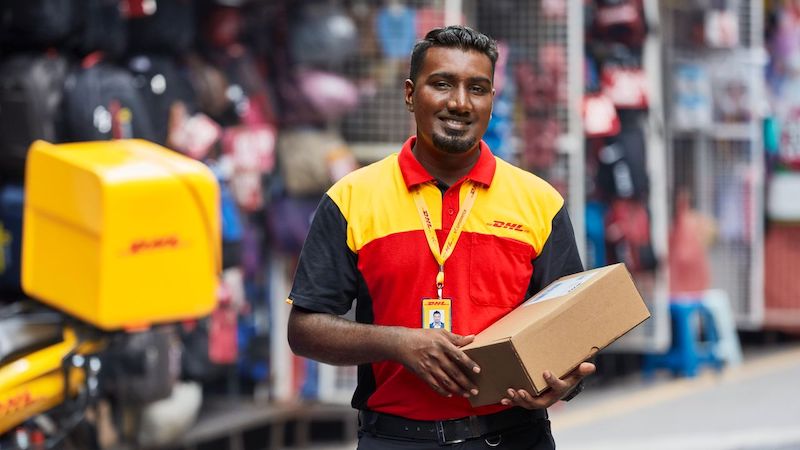Grow your business with the Discover newsletter
Logistics advice & insights straight to your inbox
Subscribe now
If you’ve been hearing a lot about dropshipping these days, it’s no surprise at all. The dropshipping business model is rapidly gaining traction worldwide, with the global market valued at a whopping U$225.99 billion in 2022, statistics by Grand View Research reveal. Thanks to increasing online shopping trends and the surge in cross-border e-commerce, dropshipping is, therefore, becoming an attractive business prospect. For budding entrepreneurs in Sri Lanka, dropshipping presents an incredible opportunity to tap into this growth as it marries the country’s booming e-commerce with global trade dynamics.
At its core, dropshipping is a streamlined form of retail where a store doesn't keep the products it sells in stock. Instead, when a product is sold, it purchases it from third-party suppliers and has it shipped directly to the customer. This is done while retaining the dropshipping brand on customer-facing materials, such as the packaging and invoice. This eliminates the need for a physical inventory, let alone managing it, thus reducing overhead costs. With its inherent simplicity and efficiency, it's no wonder dropshipping has become a favoured business model.
Ready to dive in? Here are steps you can take to kick off your dropshipping journey.
Understanding the nuances of your target market is pivotal. Begin by identifying trends and niches with potential for profitability. Take, for instance, the global trend towards sustainable and eco-friendly products. A deep dive into market research might reveal a growing international demand for sustainable fashion or biodegradable makeup products. By aligning your dropshipping portfolio with these global preferences, you position yourself in a profitable niche. An eco-friendly e-commerce brand not only appeals to eco-conscious consumers but also allows you to meet global sustainability goals. Therefore, a comprehensive analysis of customer preferences and needs will not just inform your product selection but also help shape your dropshipping strategy in line with international market trends.
Finding reliable suppliers is crucial in the dropshipping world. With a focus on overseas market expansion, casting your net wide is a winning strategy. Here are some ways to search for and secure suppliers:
The burgeoning landscape of e-commerce beyond Sri Lanka offers a variety of platforms for establishing your online store. Opt for platforms that best suit your needs and integrate seamlessly with dropshipping suppliers. Popular e-commerce platforms include Shopify, WooCommerce, BigCommerce, and Magento. Each comes with its own set of features tailored to various needs, from seamless integration with dropshipping suppliers to scalable infrastructure for large inventories. Alternatively, consider setting up seller profiles on marketplaces like Shoppee, Lazada and Amazon. You’ll find similar integrative features suitable for your dropshipping venture. When it comes to the customer experience, consider these quick tips:

Successful dropshipping, whether in Sri Lanka or overseas, demands a strategic marketing approach. Harness the power of social media, capitalising on platforms favoured by customers in the markets you’re targeting. Implement robust SEO strategies to drive organic traffic to your dropshipping business site, and create engaging content that resonates with potential customers.
In dropshipping, excellent customer service can set you apart. The very nature of dropshipping means you don’t hold inventory, making the post-purchase experience even more crucial. When customers cannot physically access a store or product, their only touchpoint becomes the service they receive online. This is their primary interaction with your brand. If queries about shipping, product details, or returns aren’t addressed promptly and effectively, trust can erode quickly. Furthermore, since you're reliant on third-party suppliers, any hiccups in communication can escalate into bigger issues for your customers.
Prompt responses, clear communication, and efficient problem-solving are pivotal. The backbone of this is a reliable logistics system. Partnering with trusted delivery services ensures products reach customers as promised, enhancing your brand's reputation.
A flourishing dropshipping business is as good as its logistics partner. With DHL Express, you're assured of efficient, fast, and reliable deliveries, making it easier to meet and exceed customer expectations. Intuitive tools like MyDHL+ make order preparation a breeze, and international priority shipping speeds up order fulfilment, meaning overall, your suppliers can quickly prepare and have parcels reach your customers within the shortest time possible. With a corporate account, you can also collaborate with your suppliers when it comes to order processing, leaving the more physical logistical and warehousing processes to them, and the last-mile experience to us. Plus, you can enjoy discounted international shipping rates, an incredible perk for businesses looking for ways to reduce shipping costs. So, why wait? It's time to scale your dropshipping business to new heights with a DHL Express business account.